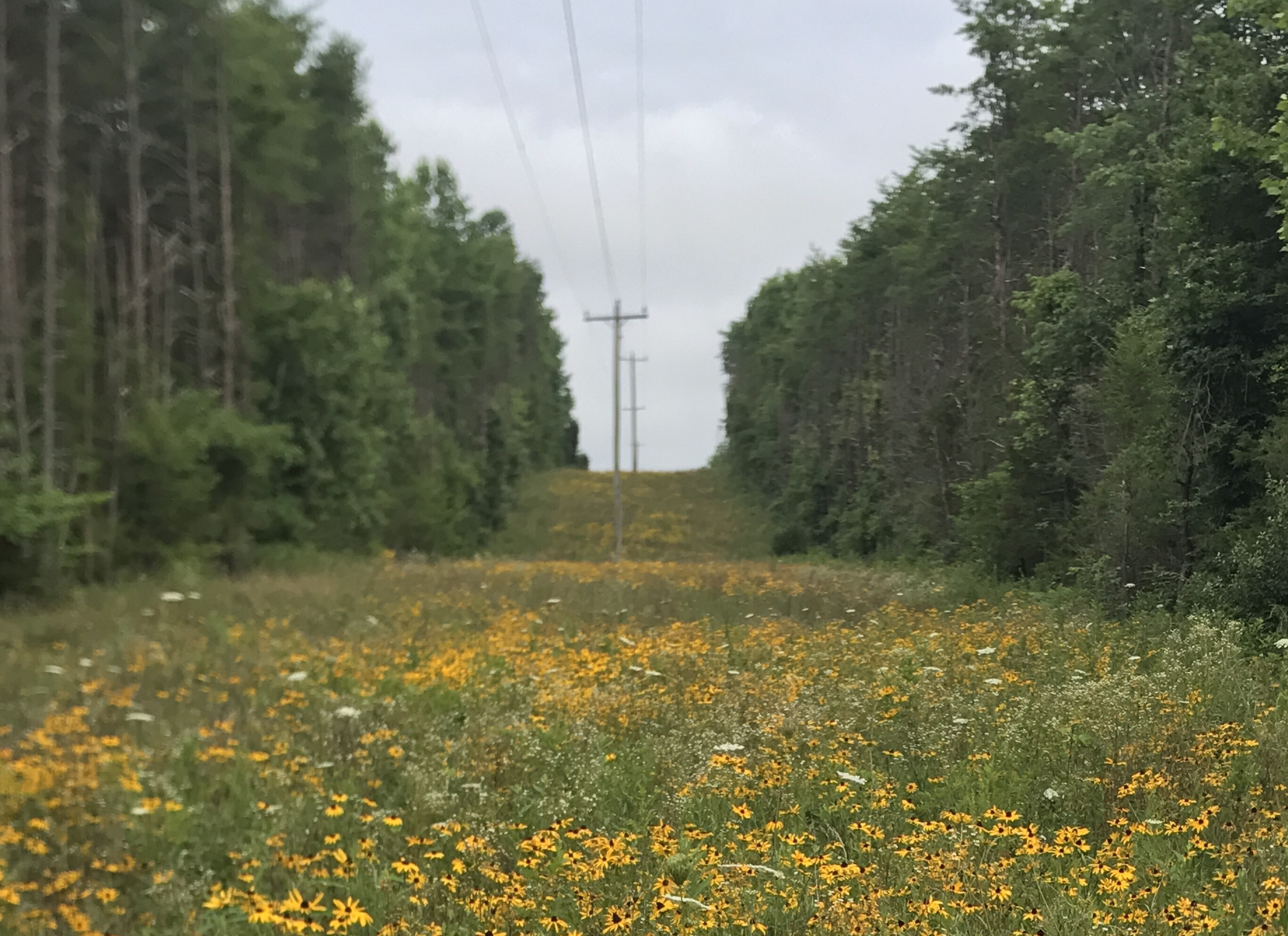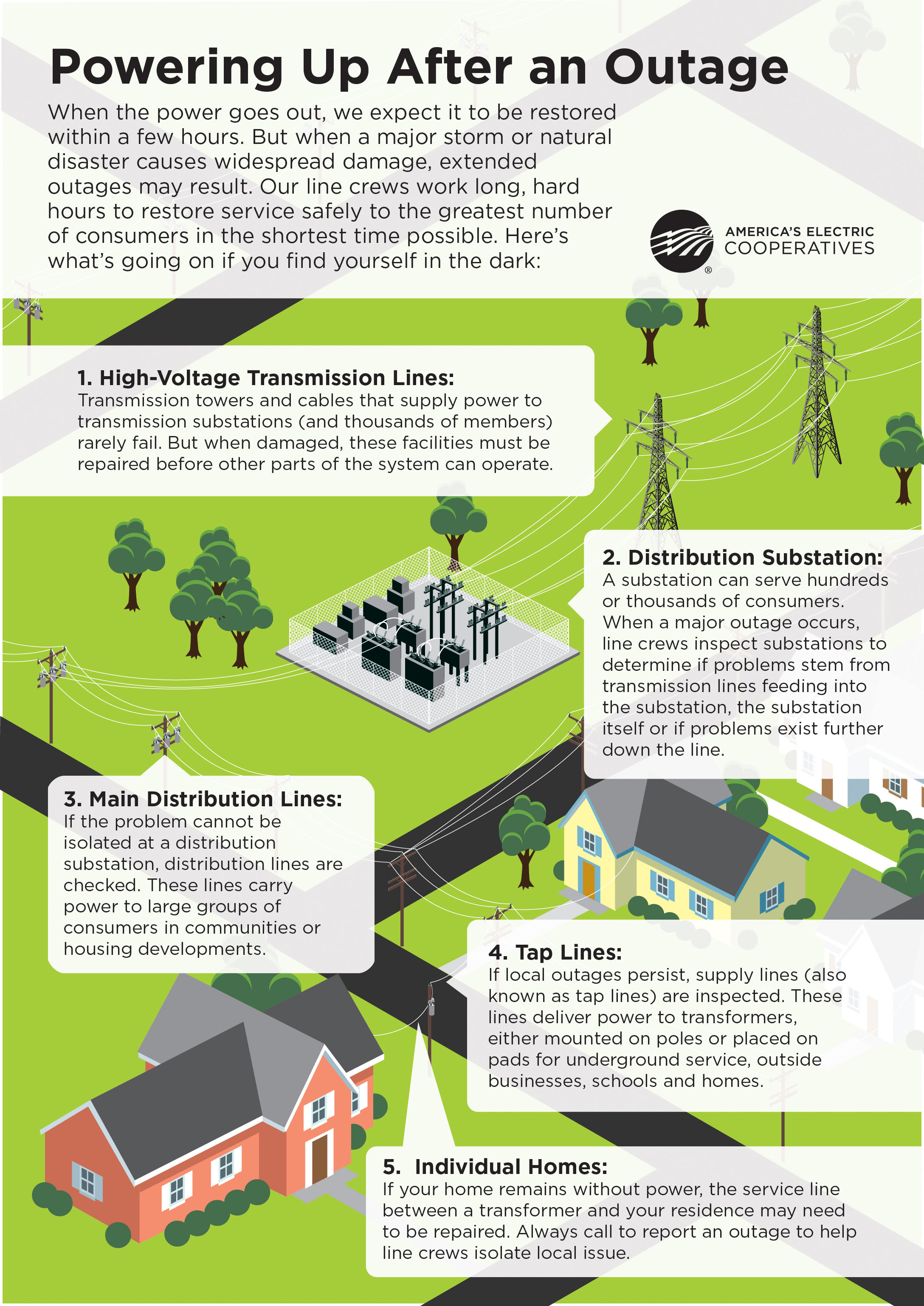Reliability
CVEC is dedicate to keeping the lights on and limiting the impact when outages do occur through strategic system improvements and an extensive Right-of-Way (ROW) program.
Read More about ROW
One of your Cooperative’s top priorities is safe, reliable service. CVEC has a reliability plan to:
- Keep the lights on by reducing faults.
- Limit the impact when faults do occur.
- Respond and repair as quickly as possible.
1. Strategic System Improvements to Reduce Outages and Limit Impact
Most outages on the CVEC system are caused by trees growing outside of the 40-foot power line right-of-way (ROW) that fall into the ROW and onto or through the power lines. After trees, outages occur as a result of animals/birds, lightning, equipment failure, and actions by the public (auto accidents, tree cutting, farm equipment, etc.)
CVEC has an aggressive ROW maintenance program (nearly $3 million annually) to keep the lines clear. We maintain a 40-foot right-of-way for distribution lines and, depending on the voltage, a 75 to 200-foot right-of-way for transmission lines. You will likely see ROW crews once every five years in your neighborhood, trimming mature trees or removing young saplings so they will not grow into the wire zone of the power lines or hinder power restoration and maintenance efforts. You can read more about CVEC's ROW Program here. On top of increasing the pace and scope of ROW work, CVEC has also adopted a "danger tree" program, which involves removing dead or diseased danger trees that are outside of the CVEC ROW but are in danger of falling into the electric lines. Danger trees are cut with the property owner's permission and left on the premises.
 In 2020, CVEC started a new Inspection and Maintenance (I&M) program to identify and make proactive repairs to its transmission and distribution system. Thanks to advancements in technology, including drones, we can acquire, view, store, and organized data more easily. Estimated to be 65-75% faster than patrolling by foot, drones can obtain pictures quickly and allow our staff to view images at a later time if necessary. In addition, the elevated position of the images that are taken helps to identify problems that would not normally be seen from the ground, even with the use of magnification.
In 2020, CVEC started a new Inspection and Maintenance (I&M) program to identify and make proactive repairs to its transmission and distribution system. Thanks to advancements in technology, including drones, we can acquire, view, store, and organized data more easily. Estimated to be 65-75% faster than patrolling by foot, drones can obtain pictures quickly and allow our staff to view images at a later time if necessary. In addition, the elevated position of the images that are taken helps to identify problems that would not normally be seen from the ground, even with the use of magnification.
CVEC has also made an effort to increase the number of protective devices located along the distribution line to isolate faults when they do occur and limit the impact of outages.
This includes:
- Putting fuses at the take-off point on all single-phase “tap lines.”
- Segmenting three-phase lines with protective equipment that will isolate the fault and keep as many people in service as possible.
- Looking for opportunities to construct alternate paths to back-feed power.
2. Impact of Increased Efforts on Reliability
Keeping the lights on safely and cost-efficiently is a top priority and one of the best ways we can serve our members. Over the past few years, CVEC slashed outage times by nearly half due to increased investments in vegetation management and substation maintenance and upgrades. In 2020, we achieved record best year in reliability, with members seeing an average of 127 minutes that year!

In 2022, an unusually active year of storms and weather-related events challenged the Cooperative’s efforts and historical reliability achievements. We saw over 1,900 outage events - the highest number we’ve seen in over a decade. However, the chart below shows how the additional protective devices, increased inspections and line patrol, removal of danger trees, and good response times have reduced the overall impact of outage events when they do occur. Mother nature will always play a role in outage times, but the efforts CVEC has undertaken in the past few years are having significant impacts outage times.

3. Outage Response and Restoration
Despite all of the planning and best efforts, outages will occur, particularly in Cooperative territories that have radial lines. One downed tree may affect hundreds of members or it may affect half a dozen members. After a major weather event, there may also be hundreds of trees down that need to be cleared before all members will have service restored.
CVEC has worked to establish a quick response and repair process, including:
- Positioning linemen prior to a major storm with stocked vehicles and rallying volunteer linemen from other states ready to pitch in.
- Since the primary (three-phase) circuits feeding out of the substations provide energy to all single-phase lines located farther down line, it is necessary to clear the primary lines first. This step permits the most members to see power restored as soon as possible.
- While fewer in frequency, when one of the transmission line companies drops the power feed to a CVEC substation, every member is instantly out of service and will be until service is restored by the Investor-Owned Utility that delivers energy to the CVEC distribution system.
Keeping the lights on . . .
Minimizing the impact and responding to outages
so members enjoy the good value of
comfort and convenience powered by electric energy.
Steps to Power Restoration
View the steps to Power Restoration after an Outage.
Right-of-Way Management Program
Read more about the CVEC's ROW program.
Prepare for an Outage
Despite the best maintenance programs and reliability planning, outages will occur. Be prepared.
